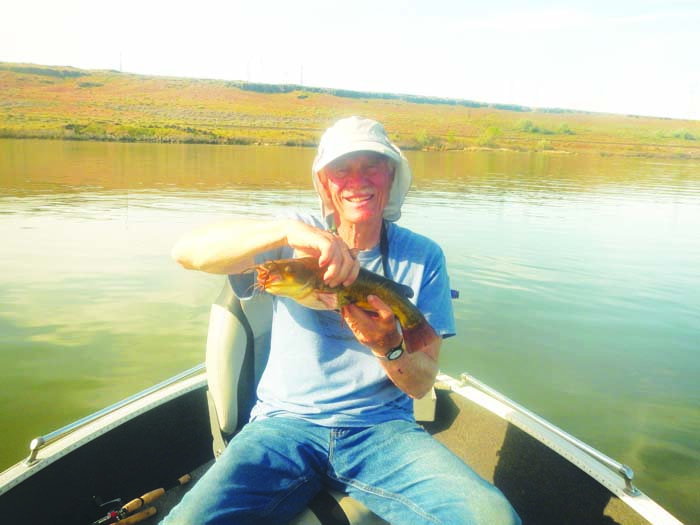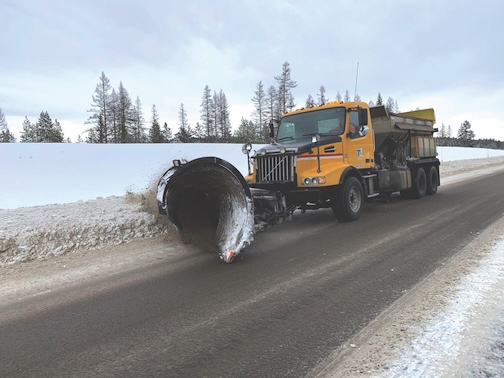The Natural World: Bullheads and remembering good friends
Published 10:18 am Monday, November 28, 2022

- Wayne Heinz show off a eater-size brown bullhead caught while jigging for smallmouth bass in a backwater of the Columbia River.
I was awakened from deep sleep to hear of Grandpa Harry’s passing on a winter dawn so bitter an inch-thick sheet of ice plated my bedroom window. The news that Dad died was delivered a few weeks short of the longest night of the year, when raw sleet pounded frozen pavement. More recently, on a cold, blustery December evening, a dear friend took his last breath. I was getting ready for bed when the phone rang. “Who could be calling this time at night?” I asked Nancy.
Trending
I picked up. “Bad news,” Ken said. My heart sank and I took a deep breath. “Duane quit breathing and they took him to the hospital where he died.”
The news was not unexpected. Duane had battled amyotrophic lateral sclerosis, or ALS, a progressive neurodegenerative disease that affects nerve cells in the brain and spinal cord, for over a year. However, a recent visit suggested he would be around for a long time. We split a ham-and-cheese on rye, told jokes via text messaging (he was hooked up to a respirator at the time), and watched the 1974 crime-spree cult classic, “Big Bad Mama.”
Mutual admiration was shared for the state of nature Angie Dickinson displayed in her prime. Duane was particularly enamored by scenes of gratuitous nudity that showcased her nubile screen daughters.
Trending
It is no surprise to those who know me that my strongest personal connections transcend to the fishing experience. Duane and I worked side-by-side during aquatic monitoring studies of the Hanford Reach and later on advanced turbine design for salmon passage in the Columbia and Snake Rivers. We backpacked to brook trout in the Wallowa Mountains, argued politics (his interest, not mine), and listened to the blues rock of Hot Tuna and Quicksilver Messenger Service.
Duane also directed me to my first steelhead on the Hanford Reach of the Columbia River. “Ringold is a good place to start,” he said. “In my humble opinion though, steelhead are a myth.”
My previous experience fishing for steelhead had been limited to the Walla Walla and Rogue rivers, where I tossed spinners or dragged a worm along the bottom. Despite Duane’s humble opinion, I elected to try for steelhead in the Reach. Approaching a shallow riffle along the Ringold Springs shoreline, I saw a steelhead roll. Two casts of a nightcrawler and “fish on!” Duane shook his head and scoffed when I told him about my catch.
Although Duane and I seldom fished together in later years, he critiqued most of my fishing stories. “You need to add more sex,” he would almost always say.
I have fond memories of a day spent casting cut bait with him and his dad in a shallow backwater pond near the Burbank wildlife refuge. What kind of fish butts heads and rubs chin whiskers with a mate during spawning? Makes a nest burrow in mud banks and hollow logs? Can taste food with its sides? Has meat the color of raw beef said “unsurpassed for gastronomic delight”? If you guessed squaretail, horn pout, creek cat, minister, or brown bullhead, then go to the head of the class.
Bullhead catfish are not native to the Pacific Northwest. According to “Coming of the Pond Fishes” by Ben Hur Lampman, the first planting in Washington State occurred around 1880 in Cowlitz County’s Silver Lake. Similar introductions were made to Oregon’s Yamhill and Willamette Rivers in a mixed bag of fish transported by rail from the Midwest. Over the last century, bullhead have continued to spread throughout the Pacific Northwest with the assistance of misguided anglers.
Bullhead fishing is often described as a “quiet sport.” I suspect the relaxing part of the experience appealed to Duane. Similar to my older brother, Daran, Duane preferred to let fish “come to him.”
I had occasion to catch several brown bullheads while the shadow of ALS hung over Duane. Knowing how much he liked these smooth-bodied, big-headed, whiskery fish, I delivered one to his home. Preparing bullhead catfish for eating is a challenge. You gut them, make a sharp incision behind the head, break the backbone and pull the head back towards the tail to peel the skin back; all the while avoiding their sharp spines. The red-meat carcass is rolled in a mixture of salt, pepper, flour, and corn meal, and fried in hot oil until crispy. Duane let his fish cool, picked it up with his fingers, and nibbled the tender meat as if it were a juicy chicken thigh.
I think of Grandpa Harry every time I toss flies for wild rainbow trout. I think of Dad on days I cast to surfperch off rugged rock outcrops on the Oregon Coast. Duane enters my thoughts whenever I catch a spiny bullhead catfish. It’s unlikely this winter’s ice fishing from a nearby reservoir will yield a bullhead. But if it does, I’ll fry it up and gnaw on its tender meat like I would from a chicken bone. That way I will surely remember Duane more.









